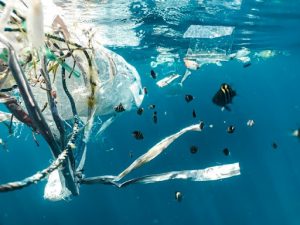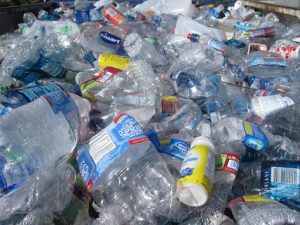Plastics are one of the most useful and resilient materials in the world, which is why they are extensively used in various household products. However, their impressive durability is as much of a curse as it is a blessing. When thrown out, plastics can take years to decompose. A plastic water bottle, for instance, may take 450 years to decompose, and a plastic toothbrush could take even longer – up to half a millennium (WWF)! With the current rate at which plastics are being produced, it’s no wonder why scientists and environmentalists are worried about the effect this rapid production will have on the environment. Now, the race is on to find a way to efficiently reduce plastic waste.

But why do plastics create such a large problem for the environment? It has to do with the way they’re constructed on a molecular level. Plastics are polymers created when molecular units are linked together, creating “chains” of atoms known as “macromolecules.” Once these macromolecules are formed, they can be extremely difficult to break. Left to the elements, plastics will pollute the environment, taking a large amount of time and effort to chemically break down. At the current rate of production, plastics in the ocean will outweigh all the fish by 2050 (energy.gov).
One way to combat the plastic crisis is to develop a new material that is able to fulfill the same functions as traditional plastics but also creates less of a strain on the environment. Recently, researchers at the Molecular Foundry at Lawrence Berkeley National Laboratory designed a polymer that can be broken up into its fundamental parts at the molecular level. This means that the material, though it looks and acts just like traditional plastics, can be recycled numerous times without losing performance or aesthetics. Traditional plastics can only be recycled at a rate of 20-30 percent, they don’t retain the same quality once the process is completed. However, this new polymer could turn plastic into a “circular” material which can be recycled endlessly without losing its properties (energy.gov).
However, this leaves scientists with another question: what do we do with the 8 billion tons of plastic that already exist? Many agree that the answer is to upcycle plastics and turn them into higher-value products like fuels, lubricants, and other materials. Scientists are looking for new ways to convert plastics into other useful materials. One team of multi-institutional researchers discovered a catalytic method of transforming plastics into waxes which can be used in cosmetics, detergents, and other everyday products (anl).

The plastic crisis is a large one that will undoubtedly take years of constant and consistent effort to solve. The sheer amount of plastic that currently exists in our oceans and landfills is enough to make one’s head spin. One thing is for sure: major changes must be made in how we deal with plastic production and disposal. But with new recycling techniques and improvements in recyclable plastics, the future looks bright for a cleaner and less-polluted Earth.
Written by: Matthew Jenkins
Date: April 24, 2022
Source:
1. https://www.wwf.org.au/news/blogs/the-lifecycle-of-plastics
2. https://www.energy.gov/science/articles/transforming-plastics-recycling-discovery-science
3. https://www.anl.gov/article/rethinking-the-science-of-plastic-recycling
